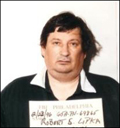Related Research Articles
Espionage, spying, or intelligence gathering is the act of obtaining secret or confidential information (intelligence). A person who commits espionage is called an espionage agent or spy. Any individual or spy ring, in the service of a government, company, criminal organization, or independent operation, can commit espionage. The practice is clandestine, as it is by definition unwelcome. In some circumstances, it may be a legal tool of law enforcement and in others, it may be illegal and punishable by law.
Spy fiction is a genre of literature involving espionage as an important context or plot device. It emerged in the early twentieth century, inspired by rivalries and intrigues between the major powers, and the establishment of modern intelligence agencies. It was given new impetus by the development of fascism and communism in the lead-up to World War II, continued to develop during the Cold War, and received a fresh impetus from the emergence of rogue states, international criminal organizations, global terrorist networks, maritime piracy and technological sabotage and espionage as potent threats to Western societies. As a genre, spy fiction is thematically related to the novel of adventure, the thriller and the politico-military thriller.

The spy film, also known as the spy thriller, is a genre of film that deals with the subject of fictional espionage, either in a realistic way or as a basis for fantasy. Many novels in the spy fiction genre have been adapted as films, including works by John Buchan, le Carré, Ian Fleming (Bond) and Len Deighton. It is a significant aspect of British cinema, with leading British directors such as Alfred Hitchcock and Carol Reed making notable contributions and many films set in the British Secret Service.

Robert Philip Hanssen was an American Federal Bureau of Investigation (FBI) agent who spied for Soviet and Russian intelligence services against the United States from 1979 to 2001. His espionage was described by the Department of Justice as "possibly the worst intelligence disaster in U.S. history".

Counterintelligence (counter-intelligence) or counterespionage (counter-espionage) is any activity aimed at protecting an agency's intelligence program from an opposition's intelligence service. It includes gathering information and conducting activities to prevent espionage, sabotage, assassinations or other intelligence activities conducted by, for, or on behalf of foreign powers, organizations or persons.
In the field of counterintelligence, a double agent is an employee of a secret intelligence service for one country, whose primary purpose is to spy on a target organization of another country, but who is now spying on their own country's organization for the target organization.
In espionage jargon, a mole is a long-term spy who is recruited before having access to secret intelligence, subsequently managing to get into the target organization. However, it is popularly used to mean any long-term clandestine spy or informant within an organization. In police work, a mole is an undercover law-enforcement agent who joins an organization in order to collect incriminating evidence about its operations and to eventually charge its members.
A sleeper agent is a spy or operative who is placed in a target country or organization, not to undertake an immediate mission, but instead to act as a potential asset on short notice if activated. Even if not activated, the "sleeper agent" is still an asset and can still play an active role in sedition, espionage, or possibly treason by virtue of agreeing to act if activated. A team of sleeper agents may be referred to as a sleeper cell. A sleeper cell or agent may possibly be working with others in a clandestine cell system.

The Foreign Intelligence Service of the Russian Federation or SVR RF is Russia's external intelligence agency, focusing mainly on civilian affairs. The SVR RF succeeded the First Chief Directorate (PGU) of the KGB in December 1991. The SVR has its headquarters in the Yasenevo District of Moscow.
A cover in foreign, military or police human intelligence or counterintelligence is the ostensible identity and/or role or position in an infiltrated organization assumed by a covert agent during a covert operation.
In intelligence organizations, agent handling is the management of so-called agents, principal agents, and agent networks by intelligence officers typically known as case officers.
As early as the 1920s, the Soviet Union, through its GRU, OGPU, NKVD, and KGB intelligence agencies, used Russian and foreign-born nationals, as well as Communists of American origin, to perform espionage activities in the United States, forming various spy rings. Particularly during the 1940s, some of these espionage networks had contact with various U.S. government agencies. These Soviet espionage networks illegally transmitted confidential information to Moscow, such as information on the development of the atomic bomb. Soviet spies also participated in propaganda and disinformation operations, known as active measures, and attempted to sabotage diplomatic relationships between the U.S. and its allies.
In espionage, a field agent or field operative is an agent who works in the field as opposed to one who operates at the office or headquarters. A field agent can work alone or in a group but usually has a case officer who is in charge.

The Duquesne Spy Ring is the largest espionage case in the United States history that ended in convictions. A total of 33 members of a Nazi German espionage network, headed by Frederick "Fritz" Duquesne, were convicted after a lengthy investigation by the Federal Bureau of Investigation (FBI). Of those indicted, 19 pleaded guilty. The remaining 14 were brought to jury trial in Federal District Court, Brooklyn, New York, on September 3, 1941; all were found guilty on December 13, 1941. On January 2, 1942, the group members were sentenced to serve a total of over 300 years in prison.
David Sheldon Boone is a former U.S. Army signals analyst who worked for the National Security Agency (NSA) and was convicted of espionage-related charges in 1999 related to his sale of secret documents to the Soviet Union from 1988 to 1991. Boone's case was an example of a late Cold War U.S. government security breach.
Clandestine human intelligence is intelligence collected from human sources using clandestine espionage methods. These sources consist of people working in a variety of roles within the intelligence community. Examples include the quintessential spy, who collects intelligence; couriers and related personnel, who handle an intelligence organization's (ideally) secure communications; and support personnel, such as access agents, who may arrange the contact between the potential spy and the case officer who recruits them. The recruiter and supervising agent may not necessarily be the same individual. Large espionage networks may be composed of multiple levels of spies, support personnel, and supervisors. Espionage networks are typically organized as a cell system, in which each clandestine operator knows only the people in his own cell, perhaps the external case officer, and an emergency method to contact higher levels if the case officer or cell leader is captured, but has no knowledge of people in other cells. This cellular organization is a form of compartmentalisation, which is an important tactic for controlling access to information, used in order to diminish the risk of discovery of the network or the release of sensitive information.
Clandestine HUMINT asset recruiting refers to the recruitment of human agents, commonly known as spies, who work for a foreign government, or within a host country's government or other target of intelligence interest for the gathering of human intelligence. The work of detecting and "doubling" spies who betray their oaths to work on behalf of a foreign intelligence agency is an important part of counterintelligence.

Robert Stephen Lipka was a former army clerk at the National Security Agency (NSA) who, in 1997, pleaded guilty to conspiracy to commit espionage and was sentenced to 18 years in prison. He was arrested more than 30 years after his betrayal, as there is no statute of limitations for espionage.
Walk East on Beacon is a 1952 American film noir drama film directed by Alfred L. Werker and starring George Murphy, Finlay Currie, and Virginia Gilmore. It was released by Columbia Pictures. The screenplay was inspired by a May 1951 Reader's Digest article by J. Edgar Hoover entitled "The Crime of the Century: The Case of the A-Bomb Spies." The article covers the meeting of German physicist and atomic spy Klaus Fuchs and American chemist Harry Gold as well as details of the Soviet espionage network in the United States. Gold's testimony would later lead to the case against Julius and Ethel Rosenberg for treason. The film substitutes real atomic spying with vague top secret scientific programs. Extensive location shooting was done in New England, around Washington Union Station and in FBI laboratories.
References
- ↑ Polmar, Norman; Thomas B. Allen (October 1996). Spy Book, The Encyclopedia of Espionage . Random House. ISBN 978-0-679-42514-4.